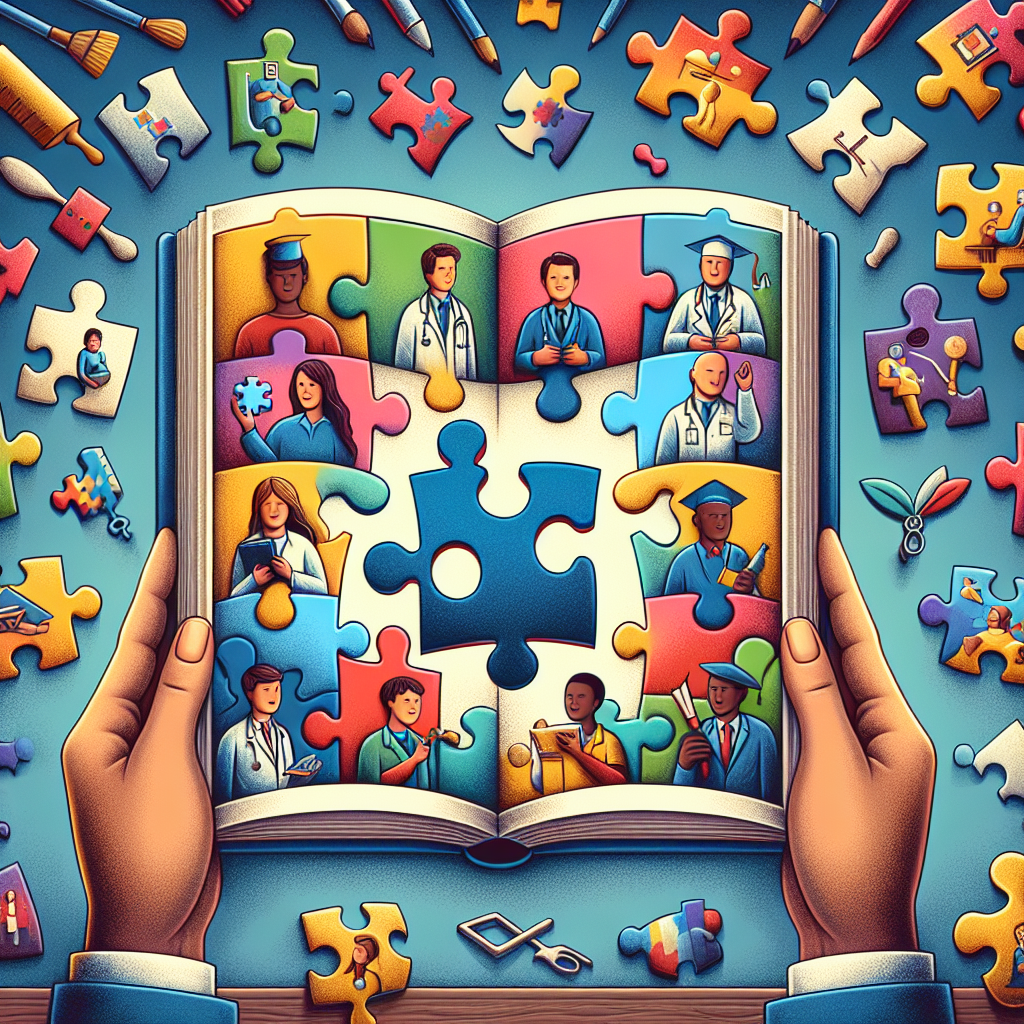
Introduction
In a world increasingly defined by diversity, understanding autism has become essential. Yet, despite better awareness campaigns, myths and misconceptions continue to permeate public perception. From bizarre stereotypes in movies to misunderstandings in everyday interactions, these myths can create barriers for individuals on the spectrum and those who love them.
This article, Understanding Autism: Breaking Down Myths and Misconceptions, aims to provide unique insights into autism by dispelling these myths and illuminating the realities of living with the condition. We’ll explore the nuances of autism, offer real-world case studies, and empower you with actionable knowledge to foster understanding and acceptance.
What Is Autism?
Before delving into the misconceptions, it’s vital to grasp what autism is. Autism Spectrum Disorder (ASD) refers to a range of neurodevelopmental conditions characterized by challenges in social interaction, communication, and restricted or repetitive behaviors. The term "spectrum" highlights the wide variation in how it manifests; some individuals may require significant support, while others may lead entirely independent lives.
Key Statistics
| Statistic | Data |
|---|---|
| Prevalence Rate | 1 in 54 children |
| Gender Ratio (Boys to Girls) | Approximately 4:1 |
| Percentage with Intellectual Disability | About 31% |
These statistics illustrate not just the prevalence of autism but also the importance of understanding autism: breaking down myths and misconceptions for the benefit of all.
Common Myths about Autism
Myth 1: Autism Is Caused by Vaccinations
One of the most pervasive myths is the unfounded claim that vaccines cause autism. This belief stems from a discredited study published in 1998 by Andrew Wakefield, which has since been retracted due to significant ethical concerns and flawed methodology.
Case Study: Jenny McCarthy
Jenny McCarthy, a prominent public figure, became an advocate against vaccinations after claiming that her son’s autism was linked to the MMR vaccine. This led to a national conversation that muddled scientific facts and ignited fear among parents. The medical community has conducted extensive research, debunking the vaccine-autism connection overwhelmingly.
Relevance: This case exemplifies how influential voices can disrupt public understanding, highlighting the need for critical evaluation in promoting understanding autism: breaking down myths and misconceptions.
Myth 2: People with Autism Lack Empathy
Another common misconception is that individuals with autism lack feelings and emotions or cannot empathize with others. In reality, many individuals on the spectrum feel strong emotions but may express them differently or struggle to recognize them in social contexts.
Case Study: Temple Grandin
Temple Grandin, an autistic advocate, and renowned animal scientist, exemplifies how empathy manifests differently in individuals with autism. She describes experiencing heightened sensory perceptions that allow her to understand animals in ways others cannot, affirming that empathy can take various forms.
Relevance: Grandin’s narrative challenges the portrayal of individuals with autism as devoid of emotional understanding, reinforcing the message of understanding autism: breaking down myths and misconceptions.
Myth 3: All Autistic People Are Mathematical Geniuses
The stereotype of the “savant” — individuals with extraordinary abilities in specific areas like math or art — can mislead many. While some people with autism do possess incredible talents, the idea that all autistic individuals have such skills is simply untrue.
Case Study: Stephen Wiltshire
Stephen Wiltshire is an artist who can draw complex cityscapes from memory. Although remarkable, this talent doesn’t represent all individuals on the spectrum. Many have varied interests and skills that reflect their personal experiences.
Relevance: Wiltshire’s journey showcases the diversity of skills within the autistic community, contradicting the myth that all must display savant-like abilities, emphasizing the principles of understanding autism: breaking down myths and misconceptions.
Myth 4: Autism Can Be “Cured”
The belief that autism can be cured is fundamentally misleading. Autism is a lifelong condition; however, many individuals can learn coping skills and strategies to navigate the world more effectively.
Case Study: David
David, diagnosed with autism at a young age, has undergone various therapies that helped him improve his communication skills. While he has experienced significant growth, he still identifies as autistic. His story highlights that rather than seeking a “cure,” the focus can be on support and empowerment.
Relevance: David’s experience underscores the importance of acceptance and support rather than viewing autism as a disorder that needs fixing, reinforcing the theme of understanding autism: breaking down myths and misconceptions.
The Spectrum of Autism
Understanding autism requires acknowledgment of its spectrum nature. Not every individual on the spectrum experiences the same challenges or displays the same strengths.
Levels of Support
Here’s a general breakdown of the support levels that may be required by individuals with autism:
| Level of Support | Description |
|---|---|
| Level 1 (Requiring Support) | Individual may struggle with initiating conversations and may have difficulty with organization. |
| Level 2 (Requiring Substantial Support) | Individuals may exhibit more obvious difficulties in social interactions and communication challenges. |
| Level 3 (Requiring Very Substantial Support) | Individuals may have significant challenges in all areas of life and often require extensive support. |
This tiered understanding acknowledges the varying needs and capabilities, emphasizing the necessity of understanding autism: breaking down myths and misconceptions.
The Importance of Early Intervention
Research has shown that early intervention can significantly improve outcomes for individuals with autism. Programs that focus on social skills, communication, and behavioral strategies can lead to better integration into society.
Success Stories
-
Autism Early Intervention Program: In a 2007 study, children who participated in an early intervention program showed marked improvements in IQ, language skills, and adaptive behavior. They fared better in academic settings compared to those who received no early support.
- The Role of Family: Families that adopt a proactive approach by engaging with early intervention resources often report better outcomes. A committed family unit can make an immense difference in navigating the world of autism.
Conclusion: These stories highlight the undeniable benefits of understanding autism, breaking down myths around early interventions and their effectiveness.
Creating a Supportive Environment
Creating a supportive space for individuals with autism involves societal change, understanding, and empathy. Parents, educators, and communities all play a vital role in this endeavor.
Practical Steps to Support Individuals with Autism
-
Education: Engage in training sessions and workshops to better understand autism and how it affects behavior.
-
Advocacy: Be vocal about the rights of individuals with autism and push for inclusive policies in schools and workplaces.
- Empathy: Cultivate an atmosphere of understanding and approach individuals on the spectrum with an open mind.
Conclusion
Understanding autism: breaking down myths and misconceptions is not just about informing the public; it’s about fostering acceptance and appreciation for diversity. By addressing misconceptions with facts, sharing real-life experiences, and supporting individuals with autism, we can create a more inclusive world.
Inspirational Takeaway
Embrace the complexity of the human experience. Understanding autism helps us appreciate the unique contributions of every individual, and through compassion and knowledge, we can drive meaningful change.
FAQs
1. Is autism a mental illness?
No, autism is not classified as a mental illness. It is a neurodevelopmental disorder that affects how individuals perceive the world and interact with others.
2. Can individuals with autism lead independent lives?
Yes, many individuals with autism can and do lead independent lives. The level of independence varies based on individual capabilities and support received.
3. Are all autistic individuals the same?
No, autism is a spectrum disorder, meaning individuals with autism can have vastly different experiences, skills, and challenges.
4. What are the signs of autism in children?
Signs can include delayed speech, difficulty making eye contact, lack of interest in social interactions, and specific routines.
5. How can I support a friend or family member with autism?
Understanding their unique challenges and communicating openly is crucial. Encouragement, patience, and advocacy can significantly affect their journey.
As we wrap up this exploration into understanding autism: breaking down myths and misconceptions, remember that your knowledge can pave the way for more inclusive societies. Engage, share, and advocate!


















